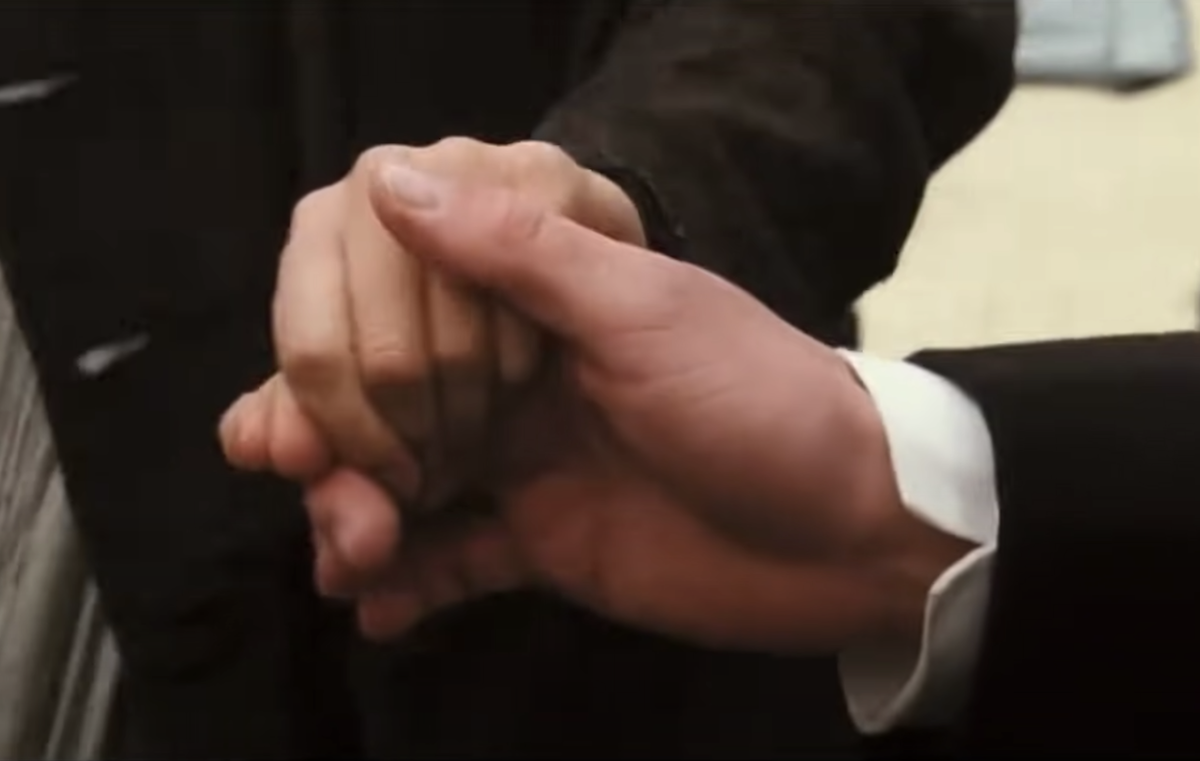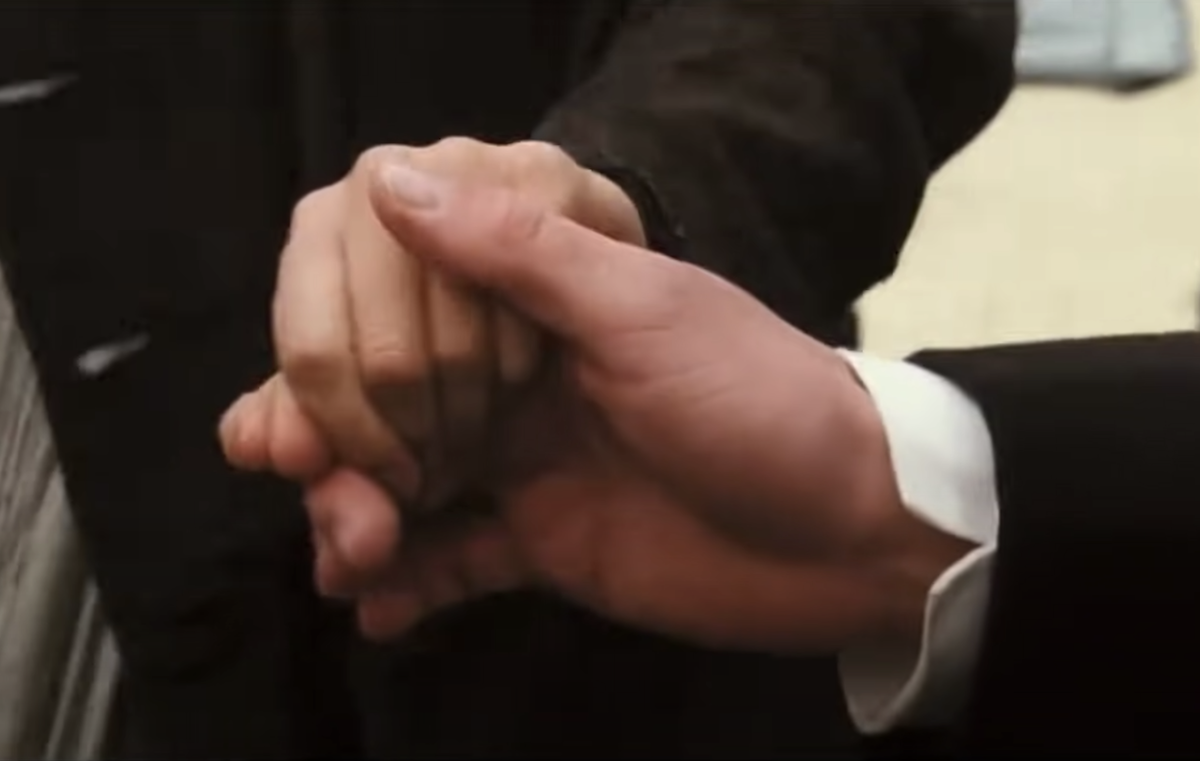
1 Famous ‘Pride and Prejudice’ Scene Wasn’t Planned, Matthew Macfadyen Admitted
The “Darcy Hand Flex” from the 2005 film adaptation of Pride and Prejudice has become somewhat of a phenomenon. Matthew Macfadyen’s (Succession) racy addition to the now-famous scene highlights the complicated code of Regency-era dating. It perfectly conjures the soul of Jane Austen’s widely loved masterpiece. If it weren’t for Macfadyen and Director Joe Wright being willing to go off script, it never would have happened.
The hand touch between Darcy and Lizzie created waves with ‘Pride and Prejudice’ fans

Two centuries after the book was first published, Pride & Prejudice entered a new phase thanks to TikTok and social-media memes. As explained by Vulture, the sensual, skin-on-skin hand touch between prospective lovers Mr. Darcy (Macfadyen) and Lizzy Bennet (Keira Knightley) now has a whole fan base.
In the scene, Darcy offers his bare hand to Lizzie as she boards a carriage. This was a huge no-no in early-19th century high society. He’s then seen flexing his hand as he swiftly leaves a thoroughly shocked Lizzie behind him.
Reflecting on the scene with NPR, Macfadyen recently admitted he added the hand flex, though he also refused to take credit for its impact. “[Director Joe Wright] doesn’t miss a trick, and he’s so alive to things,” Macfadyen said, adding he originally did the move in an early take. After seeing Macfadyen add the hand flex, Wright quickly made sure to capture a close-up in subsequent takes.
As it appears early in the film, the hand flex adds significant weight to the moment. It happens to be the perfect quick-hit of subtle eroticism. Lizzie’s gaze mirrors Darcy’s own flurry of sensuality showcased in the hand flex, which all happens under the nose of onlookers in broad daylight.
Why the hand flex fits Jane Austen’s world in ‘Pride and Prejudice’
More than just a dose of eroticism, the moment taps right into some of the broader themes of Austen’s work. First published in 1813, the book has become one of the most famous of the era and helped make Austen a giant in the literary world. As The Atlantic outlined, Austen had to work subtly while sexualizing her male characters. Overt eroticism of a man in print would have been all but unthinkable at the time.
Though The Atlantic piece defends the 1995 Colin Firth Pride & Prejudice miniseries, the sentiment also fits the 2005 movie version. As Elite Daily points out, the Darcy Hand Flex is about the feminine gaze and making Macfadyen’s character the object of desire. Darcy might think of himself as a traditional high-born. Yet a momentary touch of Lizzie’s skin breaks his polished demeanor and flips tradition on its head.
While some picky Austen scholars take issue with the overly romanticized approach, others point out that making Darcy a dreamy icon works well within the subtext of Pride & Prejudice (and Austen’s work in general). In this vein, Lizzie seeing the hand flex gives her a dash of autonomy typically missing from Austen’s contemporaries. In a flash, Lizzie becomes active in her romantic pursuits, not just another piece on the chess board.
Public skin-on-skin contact would have been scandalous
But the scintillating moment also does more than just shake up traditional roles; it hints at a scandal that could light a fire of gossip. Diving into the scene, Vanity Fair‘s etiquette expert notes that direct touching would have been viewed as outright “saucy” during the Regency era. Even writing a letter to a non-fiancée/fiancé was too hot to handle per the BBC. So Lizzie and Darcy’s touch could bring on the fainting couch for an uptight onlooker.
The confining expectations of courtship would have also been stifling at the time, leaving our couple with few opportunities for spontaneity. When Darcy grips Lizzie’s ungloved hand, he knows he’s completely shredding etiquette for a forbidden moment. Because any wrong move in romance could lead to ruin for Darcy or Lizzie, breaking any custom at all is both dangerous and risky — a classic romantic theme that is older than Shakespeare.
Whether Austen scholars approve or not, the Mr. Darcy Hand Flex appears poised to live on as modern audiences fantasize about Regency-era life from a comfortable distance. As always, the hint of forbidden acts of love never quite goes out of style — even more than 200 years after Austen dreamt up Pride & Prejudice.


